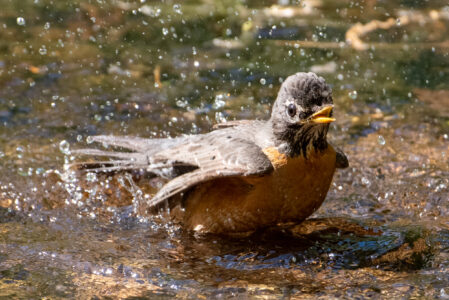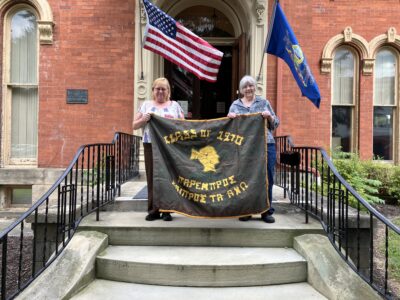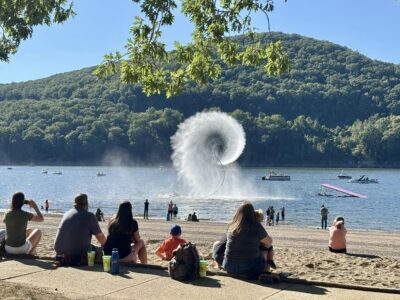The snowball bushes (hydrangeas) are just spectacular this year
The hydrangeas this summer are spectacular. From the Chautauqua Institution to my hill top country garden, hydrangeas are in full bloom. These “snowball bushes” have always been a garden favorite. The charms of their large billowy blossoms are irresistible. The hydrangeas love our northwestern Pennsylvania climate with its long, cold winters and soft warm summers.
H. macrophylla , are easy to cultivate, tolerate almost any soil and produce flowers from mid-summer to late fall at a time when our perennial borders have given up for the season. They are one of those good dependable flowering shrubs that we can count on season after season.
There are two types of hydrangeas. Group 1 bloom on new growth (this year’s stems). They form their buds in early summer on new growth and with almost no care will flower for years to come. Within this group is Panicle Hydrangea (H. paniculata). These shrubs are hardy to zone 3 and have fat, cone shaped flower heads. The most common cultivar is Grandiflora or P.G. This is a wonderful floppy old shrub that can stand 10-15 feet tall and will produce white blooms that turn a lovely soft pink as we move into September. Another good cultivar is smooth hydrangea (H. arborescens) or snowball. These plants are great in our cold climate. The blossoms resemble large, white flowered pompoms. Grandiflora and Annabelle are good cultivars in this group.
Group 2 plants bloom on old wood (last year’s stems). The oakleaf hydrangea (H. quercifolia) have very hardy buds and thrive in our zone five. They are noted for their spectacular colored leaves that in the fall range from red to purplish burgundy. Snow Flake, Snow Queen and Alice are great cultivars in this group. Big leaf hydrangeas (H. macrophylla) have large ball shaped flowers while lace caps are flat topped clusters of flowers. Climbing hydrangeas, which bloom from June to July, are vines with the flat, lacey, creamy white lace cap flowers.
When planting your hydrangea provide rich, porous, moist soil. If the soil is poor add compost. The hydrangea likes morning sun and afternoon shade although the farther north you live, for example northwestern Pennsylvania, the more sun they can take. They do not like and will not thrive in complete shade. Place the hydrangea in a location where it does not have to be pruned and can reach its natural height, usually four feet. Hydrangeas may be planted in the spring or fall. Dig a hole as deep as the plant in the container and 2 to 3 times as wide as the root ball. Set the plant in the hole and fill halfway with soil. Fill the empty space with water. After the water has drained fill the rest of the hole with soil. For the first year or two you should water as needed.
Prune your hydrangea with care. If you have the common big leaf hydrangea, don’t prune unless absolutely necessary and then prune immediately after blooming or you may not have flowers next year.
Oak leaf, panicle and smooth hydrangeas bloom on the current season’s wood and can be pruned before bloom in early spring or late winter. When removing the faded blossoms cut just below the bloom.
Hydrangeas can be dried to create wreaths and other decorations around the house. Harvest the mature flowers when they have developed a papery consistency. Remove the stems and hang upside down in a warm, dry and airy room. In a couple of weeks store the flowers in a dry location.
It is possible to change the color of the hydrangea although color correction can take weeks or months. You should wait until the plant is two years old and has become established before trying to change the color. To get blue flowers you need to lower the pH by adding sulfur or peat moss to the soil. To get pink flowers add ground limestone to the soil around the plant.
The beautiful foil wrapped gift hydrangeas in the florist shops have been grown in greenhouses and are meant for a one time dramatic display. They have special needs and are not meant to be planted in the garden. When their blooms fade they should be composted.
One of the common reasons that hydrangeas do not flower is a late frost that damages the flower buds of those hydrangeas that bloom on last year’s wood.
Hydrangeas remind me of my grandmother’s garden. She had many hydrangeas , which she called snowball bushes, on the north side of the house. In late summer there was always a bouquet on the table in the shadowy, high ceilinged dining room. Hydrangeas are easy to grow, are a true low maintenance shrub and give years of enjoyment. Late summer is great time to get one or more started in your garden.




